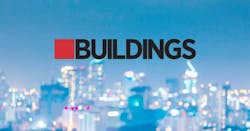Energy-Efficient and Green Strategies to Increase Value of Class B/C Buildings (BOMA 2020)
The Class B/C market often sees many constraints, from information to resources and funding, that often hold it back from investments and projects that incorporate sustainable features into a building. However, property and facility managers and building owners can utilize several simple solutions to increase the value of their building’s bottom line, discovered in the strategy-driven presentation “Capturing Hidden Value in Class B and C Office Portfolios through Energy Efficiency and Green Leasing” at the 2020 BOMA International Conference & Expo.
According to panelist Marta Schantz, senior vice president of Greenprint for the Urban Land Institute (ULI), there are many market drivers motivating class B/C owners to take action to create more energy-efficient, green buildings. They include cost savings, policy requirements, tenants and repositioning a building to a next level class. The new report Unlocking Hidden Value in Class B/C Office Buildings, produced by BOMA, ULI and Rocky Mountain Institute (RMI) and sponsored by Yardi, emphasizes that the business case is strong when it comes to adding value to a building’s bottom line through untapped sustainability opportunities.
To get started, Joey Cathcart, associate for Buildings at RMI, said facility managers and building owners should concentrate their efforts on the low-hanging fruit, or low-cost options to increase a building’s energy efficiency. Methods like changing lighting to LEDs and programming thermostats during times of low occupancy are just a couple of energy efficiency and leasing strategies that are low-cost and can provide a quick payback, he explained.
Cathcart also recommend key building-level strategies during the session, as featured in Unlocking Hidden Value in Class B/C Office Buildings, including:
- Collect performance data
- Implement low/no-cost measures
- Engage tenants
- Incorporate green lease clauses
- Perform an energy audit
- Perform retro-commissioning
- Consider capital improvements
- Bundle into planned repositioning projects
Washington, D.C.-based The Tower Companies has implemented several of these strategies across its expansive commercial real estate portfolio, according to panelist Eugenia Gregorio, founder and principal of Gregorio Sustainability. For example, the firm upgraded equipment and controls and invested $44,000 in a real-time energy program in 2012 at the Blair Office Building. In less than a year, the multi-tenant commercial office building was able to reduce energy by almost 30% and return $50,000 in estimated annual energy savings. Gregorio added that 90% of The Tower Companies’ portfolio operates under a green lease and 95% is LEED certified.
She also noted how green leasing can create deeper energy savings for buildings and increase tenants’ well-being, which in turn can increase tenant retention. Gregorio explained that adding a few key green lease provisions, such as utilizing water-saving best practices, to standard lease forms can help align owners and tenants in their pursuit of energy efficiency, improve owner transparency, and signal to current and prospective tenants that the building is committed to sustainability.
Final panelist John Scott, senior executive managing director at Colliers International, noted that implementing these energy efficiency and green lease strategies can not only increase a building’s valuation, but also possibly lead to repositioning opportunities. Through case studies, he explained how capital investments in Class B/C office properties can reposition them into Class A.
It’s clear that when used strategically, a little can go a long way when Class B/C owners and facility managers implement energy efficiency improvements, and even more so when green lease standards are put in place.
Read next: Session Explores Bridge Between Physical and Virtual Workplace (BOMA 2020)
About the Author

Adrian Schley
Staff Writer
Adrian Schley has been writing for interiors+sources magazine since March of 2018 and creates content for the BUILDINGS team. She earned her BA in journalism at the University of Iowa, where she also studied English.
